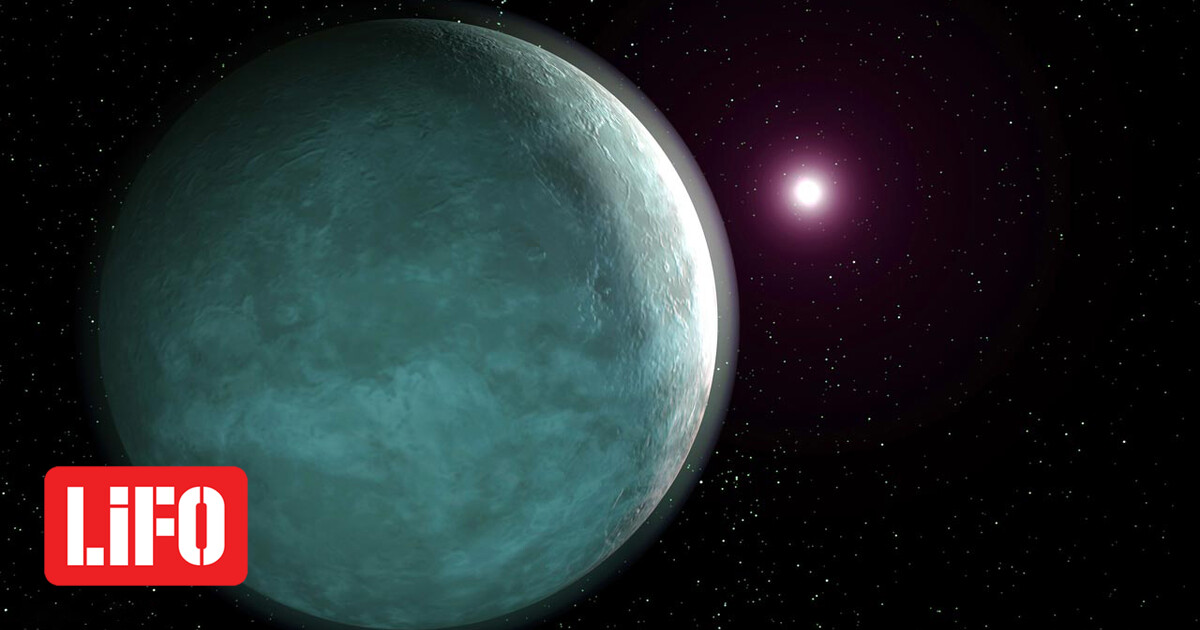
Astronomers have discovered a distant planet that could be entirely covered in a deep-sea ocean, amid a search for habitable conditions outside Earth.
Observations by NASA's James Webb Space Telescope (JWST) have revealed water vapor and chemical signatures of methane and carbon dioxide in the atmosphere of the planet, which is twice the radius of Earth and about 70 light-years away. This chemical mix is consistent with a watery world where the ocean extends over the entire surface and a hydrogen-rich atmosphere, according to researchers from the University of Cambridge, although they don't envision a calm, welcoming seascape.
“The ocean temperature can be over 100 degrees [Κελσίου] “Or more,” said Professor Nico Madhusudan, who led the analysis. At high atmospheric pressure, such a warm ocean could remain liquid, “but it is not clear whether it would be habitable,” he added.
Questioning and arguing about the planet
This interpretation was favored in a paper published in the journal Astronomy and Astrophysics Letters, but was disputed by a Canadian team that made additional observations of the same exoplanet, known as TOI-270 d. They detected the same chemicals found in the atmosphere, but said the planet would be too hot for liquid water — perhaps 4,000 degrees Celsius — and would instead have a rocky surface with an incredibly dense atmosphere of hydrogen and water vapor.
This diagram depicts the main features of the TOI 270 system, which lies about 73 light-years away in the southern constellation Pictor (Image: NASA)
Whatever the prevailing view, these latest observations demonstrate the startling insights that James Webb provides about the nature of planets outside our solar system. The telescope captures starlight filtered through the atmospheres of orbiting planets to provide detailed analyzes of the chemical elements present. From this, astronomers can build a picture of conditions on the planet's surface, and the likelihood of life surviving there.
Ammonia and conditions on the planet
TOI-270 d's ocean evidence is based on the absence of ammonia, which according to basic chemistry should occur naturally in a hydrogen-rich atmosphere. But ammonia is highly soluble in water, so it would be depleted in the atmosphere if there was an ocean below. “One explanation is that this is a so-called oceanic world, a planet with an ocean of water under a hydrogen-rich atmosphere,” Madhusudan said.
Conditions will be very different from those on Earth. TOI-270 d is tidally locked, meaning one side permanently sees its star and the other is bathed in eternal darkness, creating extreme temperature contrasts.
“The ocean will be very warm during the day. The night side could host habitable conditions,” Madhusudan said. “But there will be an overwhelming atmosphere, pressure tens or hundreds of times greater than Earth’s surface, and steam rising from the ocean. The water will likely reach depths of Between tens and hundreds of kilometers across, with high-pressure ice and a rocky core underneath.
Additional investigations of the planet
Professor Björn Beneke, from the University of Montreal, made additional observations about the planet and questioned the “ocean world” hypothesis. “The temperature from our point of view is too warm for water to be liquid,” he said, adding that the atmosphere appears to contain large amounts of water vapor, too large an amount to imagine an ocean. At the surface, temperatures can reach 4,000 degrees Celsius, Beinecke estimates, with water in a supercritical state, where the distinction between liquid and gas is at a maximum. “It's almost like a thick, hot liquid,” he said.
Both teams discovered carbon disulfide, which is linked to biological processes on Earth but can also be produced from other sources. However, there was no sign of another biomolecule, dimethyl sulfide (DMS).
“We can't call [το δισουλφίδιο του άνθρακα] “With biological activity,” Madhusudan said. “In a hydrogen-rich atmosphere, it's relatively easy to make. But if we can measure a single molecule, it's very promising that we'll be able to measure habitable planets in the future.”
“We have to be very careful about how we communicate findings about this type of object,” he added. “It's easy for the public to immediately think we've found life.”
“The spectra of these minor planets with the James Webb Space Telescope are really exciting because these are completely new environments that we have no counterpart in the solar system,” said Dr Joe Barstow, an astronomer at the Open University who was not involved in the latest work. Barstow added that further observations to track the abundance of water vapor in the atmosphere would help clarify the possibility of an ocean. “It's really exciting and cool that two groups can look at the same data set and find the same chemical structure,” he added.
With Guardian information

“Avid problem solver. Extreme social media junkie. Beer buff. Coffee guru. Internet geek. Travel ninja.”





More Stories
In Greece Porsche 911 50th Anniversary – How much does it cost?
PS Plus: With a free Harry Potter game, the new season begins on the service
Sony set to unveil PS5 Pro before holiday season – Playstation